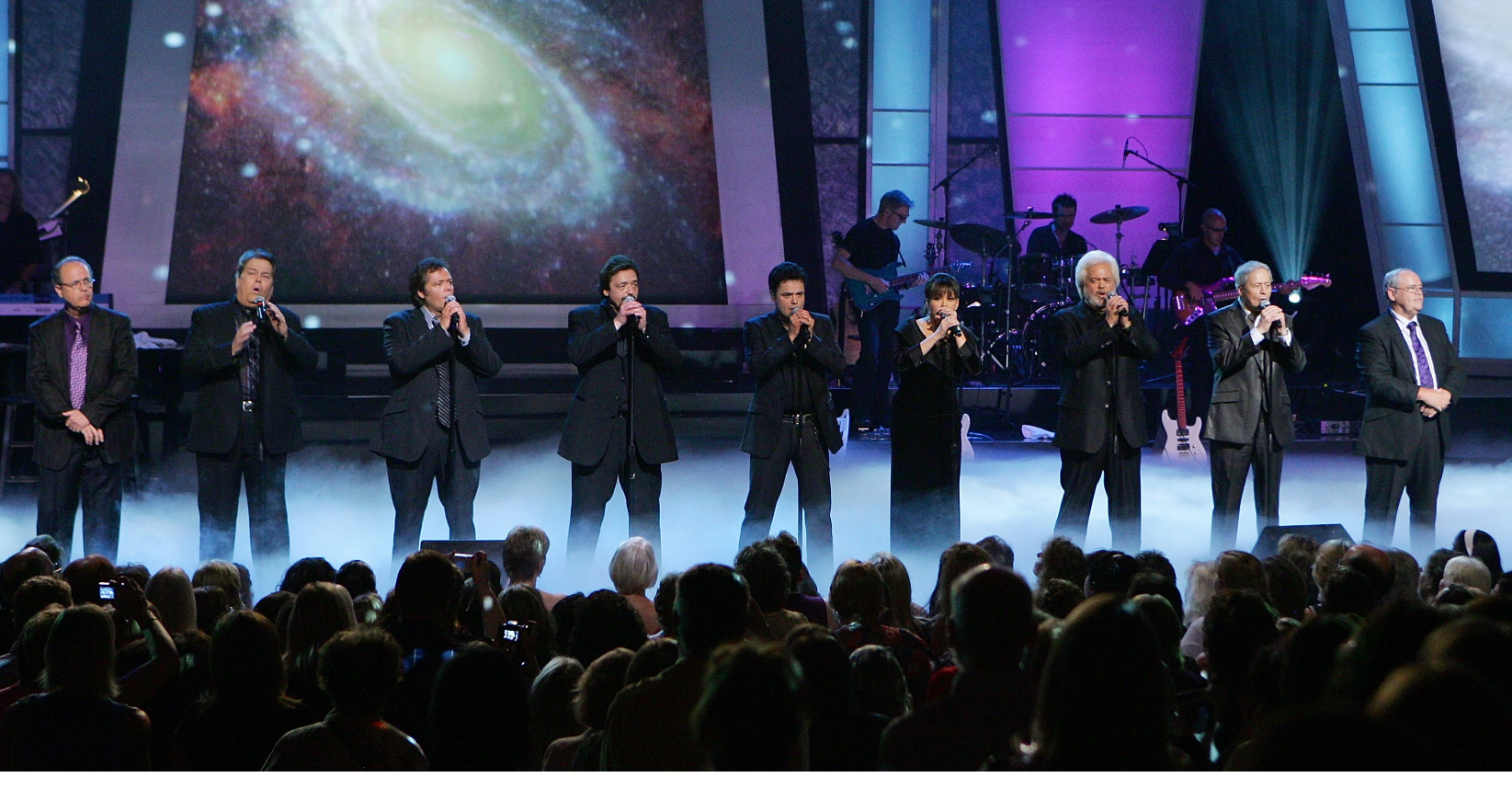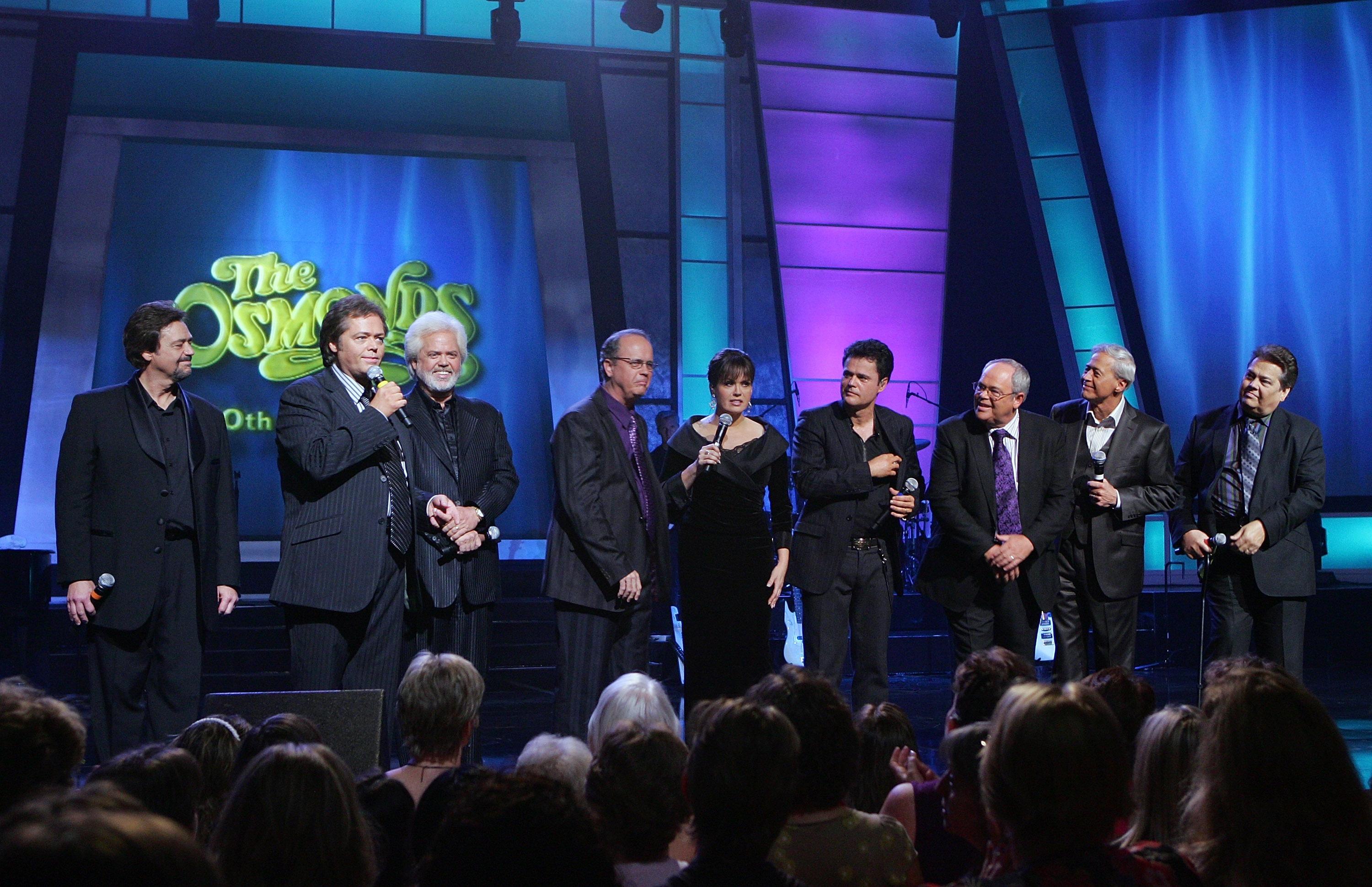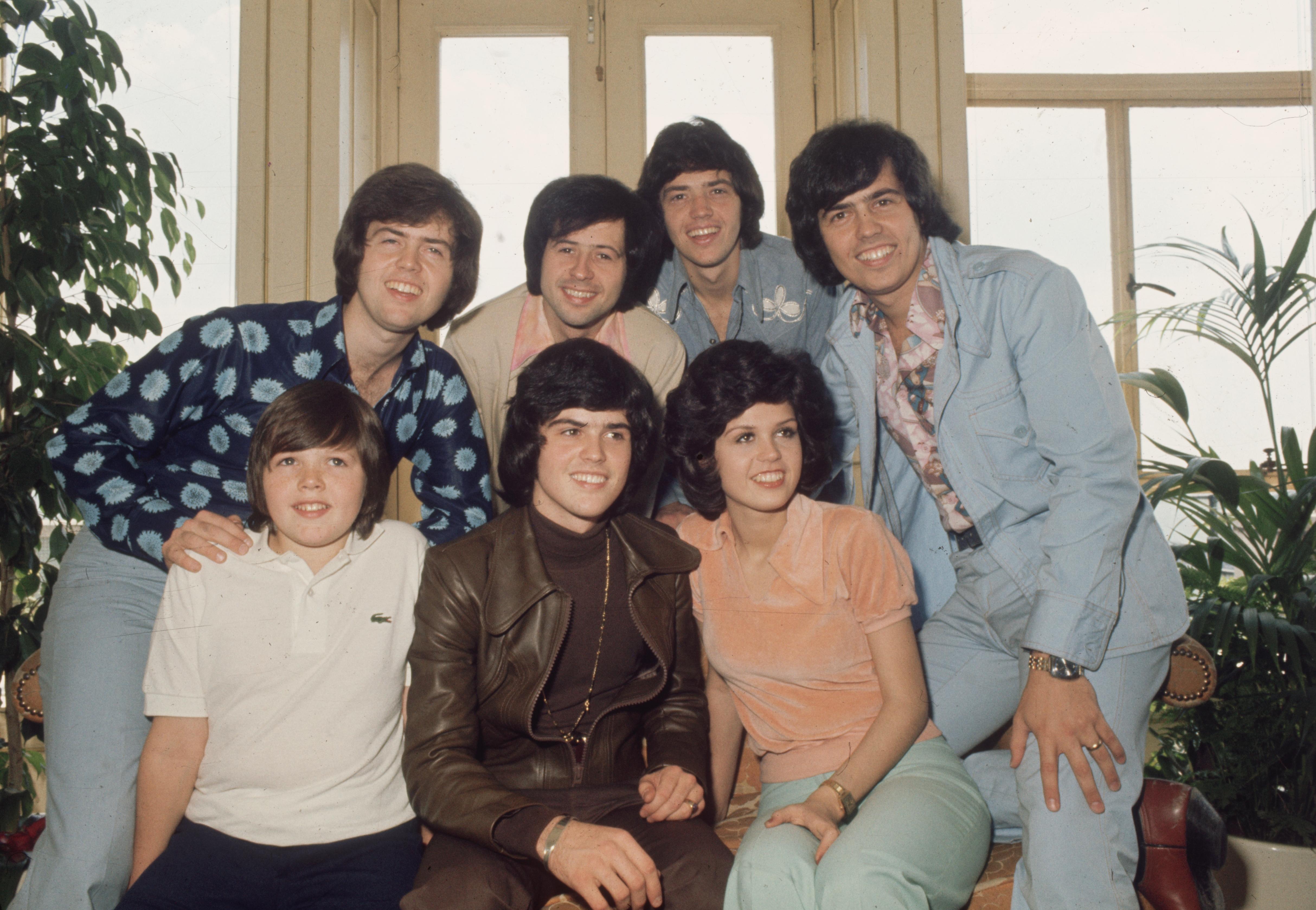When we think about groups, particularly those that have been around for a while, a question that often pops into our minds is just how numerous they were. For a musical family like the Osmonds, this kind of thought, you know, might naturally come up. We wonder about the size of their performing group, or perhaps even the entire family tree, trying to get a picture in our heads of just how many people were involved in their story. It’s a pretty common way we try to grasp the scale of things, isn't it?
The query, "how many Osmonds were there," seems simple enough on the surface, doesn't it? Yet, when you really start to consider it, the true meaning behind the word "many" itself becomes quite fascinating. It's not always about a precise count, but rather about a general sense of quantity, a feeling of a group being quite substantial. This idea of "many" holds a lot of different shades and uses, which is actually what we'll explore here, using the very way we talk about numbers.
So, instead of just giving a number, which isn't really the point when we're thinking about the deeper meaning of words, we're going to take a closer look at what "many" truly means when we ask such a question. We’ll break down its various applications and the subtle feelings it conveys, especially when applied to a well-known family, more or less, like the Osmonds. It’s a chance to really appreciate the flexibility of our language, in a way, and how we describe groups of people.
- Brooke Shields Grandchildren
- Cobra Kai Actors That Died
- Who Was Saved In The Voice
- Did Shaq Have A Stroke
- What Is The Dog From The Proposal
Table of Contents
- What Does "Many" Even Mean for the Osmonds?
- How Do We Use "Many" When Talking About the Osmonds?
- The Subtle Nuances of "Many" and "Numerous" for the Osmonds
- Can We Really Count "Many" Osmonds?
- "Many" Versus "Much" - A Question for the Osmonds?
- Exploring "Many" in Everyday Talk About the Osmonds
- The Broad Reach of "Many" When Considering the Osmonds
- Thinking About "Many" in the Context of the Osmonds
What Does "Many" Even Mean for the Osmonds?
When someone asks, "how many Osmonds were there," they are, in essence, trying to grasp a sense of scale. The core definition of "many," as a matter of fact, points to something "consisting of or amounting to a large but indefinite number." This means we're not always looking for an exact digit, but rather an impression of a sizable group. For the Osmonds, this could mean the initial performing brothers, or perhaps the wider family, including parents and sisters, so it’s a bit fluid.
It also means "constituting or forming a large number." This implies that the group, whatever its exact size, gives off the feeling of being numerous. When you consider the impact and presence of the Osmonds, their collective identity certainly suggests a significant presence. So, asking "how many Osmonds were there" isn't just a simple request for a tally; it's also a way of acknowledging their considerable group size and influence, in a way, on the entertainment world.
This idea of an "indefinite number" is key here, isn't it? It lets us talk about groups without needing to have every single member counted precisely. We can say "many people attended the concert" without knowing the exact ticket sales. Similarly, when we ponder "how many Osmonds were there," we're probably thinking about the whole ensemble, the family members who were part of their public persona, which was quite a few, actually, over the years.
- Carly And Nova
- Christina Applegate Book 2024
- Do Meredith And Thorpe Get Married
- How Are Joan And Chock Doing
- Kim Kardashian Party
How Do We Use "Many" When Talking About the Osmonds?
Thinking about "how to use many in a sentence" helps us understand the question about the Osmonds better. We often use "many" when we're trying to convey a sense of a large quantity without being overly specific. For instance, you might say, "Many people enjoyed their music," which gives a broad idea of their appeal. When the question is "how many Osmonds were there," it naturally uses "many" to inquire about a group that is perceived as large.
We can "see examples of many used in a sentence" to get a clearer picture. Consider phrases like, "There were many fans at their show," or "They had many hit songs." These examples show "many" indicating a significant, yet not precisely counted, amount. Applying this to the Osmonds, the question itself, "how many Osmonds were there," uses "many" to express curiosity about the overall size of this well-known family, or perhaps the performing members, and so on.
It's also worth noting that "many" is "used mainly in negative sentences and questions and with too, so, and as to mean a large…" This means our question, "how many Osmonds were there," is a perfectly natural and common way to employ the word. We might say, "There weren't many people who didn't know their songs," or "They had so many catchy tunes." This shows how "many" fits right into the flow of conversation when discussing a group like the Osmonds, really.
The Subtle Nuances of "Many" and "Numerous" for the Osmonds
"Many is a popular and common word for this idea," meaning it's our go-to choice for expressing a large quantity without getting bogged down in specifics. When you ask "how many Osmonds were there," "many" just feels right. It’s approachable and straightforward, fitting for a casual conversation about a well-loved family. It's the word we instinctively reach for when we want to talk about a good number of things or people, you know, without getting too technical.
However, there's also "numerous, a more formal word, refers to a great number or to very many units." While you could technically ask, "How numerous were the Osmonds?", it carries a different, slightly more academic feel. "Numerous" might be used in a historical account, for example, like "The Osmond family was numerous, contributing greatly to entertainment." This shows a distinction in tone when discussing the question of "how many Osmonds were there."
Think about the phrase "letters too numerous to mention." This conveys a sense of a quantity so vast that listing them all would be impractical. When we consider the Osmonds, while perhaps not "too numerous to mention" individually, the collective impact of "many" family members, performing and otherwise, gives a similar feeling of a large, influential group. So, the choice between "many" and "numerous" when talking about "how many Osmonds were there" actually reflects the kind of conversation you want to have, isn't that interesting?
Can We Really Count "Many" Osmonds?
The dictionary definitions page includes "all the possible meanings, example usage and translations of the word many." This highlights just how versatile the word is. When we ask "how many Osmonds were there," we are tapping into this versatility. It’s a question that can be answered with a precise count of, say, the original performing brothers, or a more general sense of the entire family, which is a bit less precise, you know.
Consider how "many" is used "in combinations such as 'as many', 'so many', 'this many') used to indicate, demonstrate or compare the number of people or things." If someone said, "There were as many Osmonds on stage as there were instruments," it gives a direct comparison. When we ask "how many Osmonds were there," we're often trying to get a similar sense of comparison or a general indication of their collective presence, just like that.
Ultimately, "many" often means "amounting to or consisting of a large indefinite number." This means that while the Osmonds are indeed countable individuals, the question "how many Osmonds were there" might not always be seeking a precise figure. It could be asking for a general impression of their family's size and reach, or how large their performing group was at its peak. It's about the feeling of a substantial quantity, rather than a strict census, in some respects.
"Many" Versus "Much" - A Question for the Osmonds?
A really important point when we consider the question "how many Osmonds were there" is "the main difference between much and many lies in the type of nouns they describe." This distinction is fundamental to using our language correctly. We use "many" for things we can count individually, like people, songs, or albums. You wouldn't say "much Osmonds," would you? That just doesn't sound right, naturally.
"Much is used with uncountable nouns, which are things we cannot count individually." Think about things like water, happiness, or time. You say "much water," "much happiness," or "much time." You can't count individual "happinesses" or "times." Since Osmonds are individual people, "many" is the correct and proper word to use when asking about their number. This is why the question "how many Osmonds were there" is grammatically sound and makes perfect sense.
So, when we're trying to figure out the size of a group of people, like the Osmonds, "many" is always the right choice. It helps us specify that we're talking about distinct units, even if we're not aiming for a precise tally. This basic rule of grammar ensures that our question about "how many Osmonds were there" is clear and easily understood, allowing us to communicate about countable groups effectively, basically.
Exploring "Many" in Everyday Talk About the Osmonds
In everyday conversation, the phrase "a good many" or "a great many" is "still in common use" to describe "being or consisting of a large number of units or" people. So, when someone asks "how many Osmonds were there," they might be implying "a good many" or "a great many" without saying those exact words. It’s a way of acknowledging their notable presence and the size of their family or performing group, you know.
The phrasing "a many" or "a pretty many" is "now rare or colloquial," but it shows how our language has adapted over time to describe quantities. While we don't use those specific phrases much anymore, the core idea of "many" as a substantial, if not exact, number persists. This just goes to show how deeply ingrained the concept of "many" is in how we talk about groups, even when discussing "how many Osmonds were there."
This common usage of "many" in general terms, rather than always demanding a precise count, allows for a more relaxed and natural way of speaking. When we talk about "how many Osmonds were there," we’re often just looking for a general idea, a feeling of their collective size, and "many" does a pretty good job of conveying that. It’s a word that bridges the gap between exact numbers and a broad sense of quantity, which is quite useful, really.
The Broad Reach of "Many" When Considering the Osmonds
The idea that you can "find 347 different ways to say many" suggests the incredible richness of our language when it comes to describing quantity. While we won't list them all, this highlights that when we ask "how many Osmonds were there," we're using just one of a vast array of options to express a large number. Each alternative might carry a slightly different shade of meaning, a little more emphasis, or a different tone.
This wide selection of words, along with "antonyms, related words, and example sentences at thesaurus.com," shows that "many" is not a solitary concept. It exists within a network of words that help us describe quantities, both large and small. When we consider "how many Osmonds were there," we're engaging with this whole linguistic framework that allows us to articulate numerical ideas, from a few to a multitude, so it's quite a comprehensive system.
So, the simple question "how many Osmonds were there" actually opens up a conversation about the expansive ways we can describe groups. It’s a testament to how flexible our vocabulary is, allowing us to convey not just a number, but also a sense of impact or scale. This broad reach of "many" means that the question is about more than just a count; it's about appreciating the size and presence of the Osmond family, too it's almost a way of honoring their collective contribution.
Thinking About "Many" in the Context of the Osmonds
When we ask "how many Osmonds were there," we are, in essence, using "many" to refer to a group that is perceived as being of considerable size. This could mean the core group of brothers who performed, or it could expand to include sisters, parents, and even later generations who were part of the family's legacy. The word "many" allows for this flexibility in scope, which is quite helpful, actually, when discussing families.
The very nature of "many" implying an "indefinite number" means that the answer to "how many Osmonds were there" might vary depending on who you consider part of the "Osmonds" for that particular question. Are we talking about those who recorded albums? Those who appeared on television? Or simply everyone born into the family? "Many" accommodates all these interpretations, allowing the question to be broadly understood, in a way.
Ultimately, the question "how many Osmonds were there" is a common and natural way to inquire about the size of a well-known group of people. It relies on our shared understanding of "many" as a word that points to a large, countable, yet often uncounted, quantity. It’s a simple question that carries with it a lot of nuance about how we perceive and describe numbers in our everyday conversations, naturally.
- Doctor Odyssey Tristan
- Lola Kelly Ripa Daughter
- Corey And Leah Now
- Kim Kardashian Party
- Do Meredith And Thorpe Get Married


